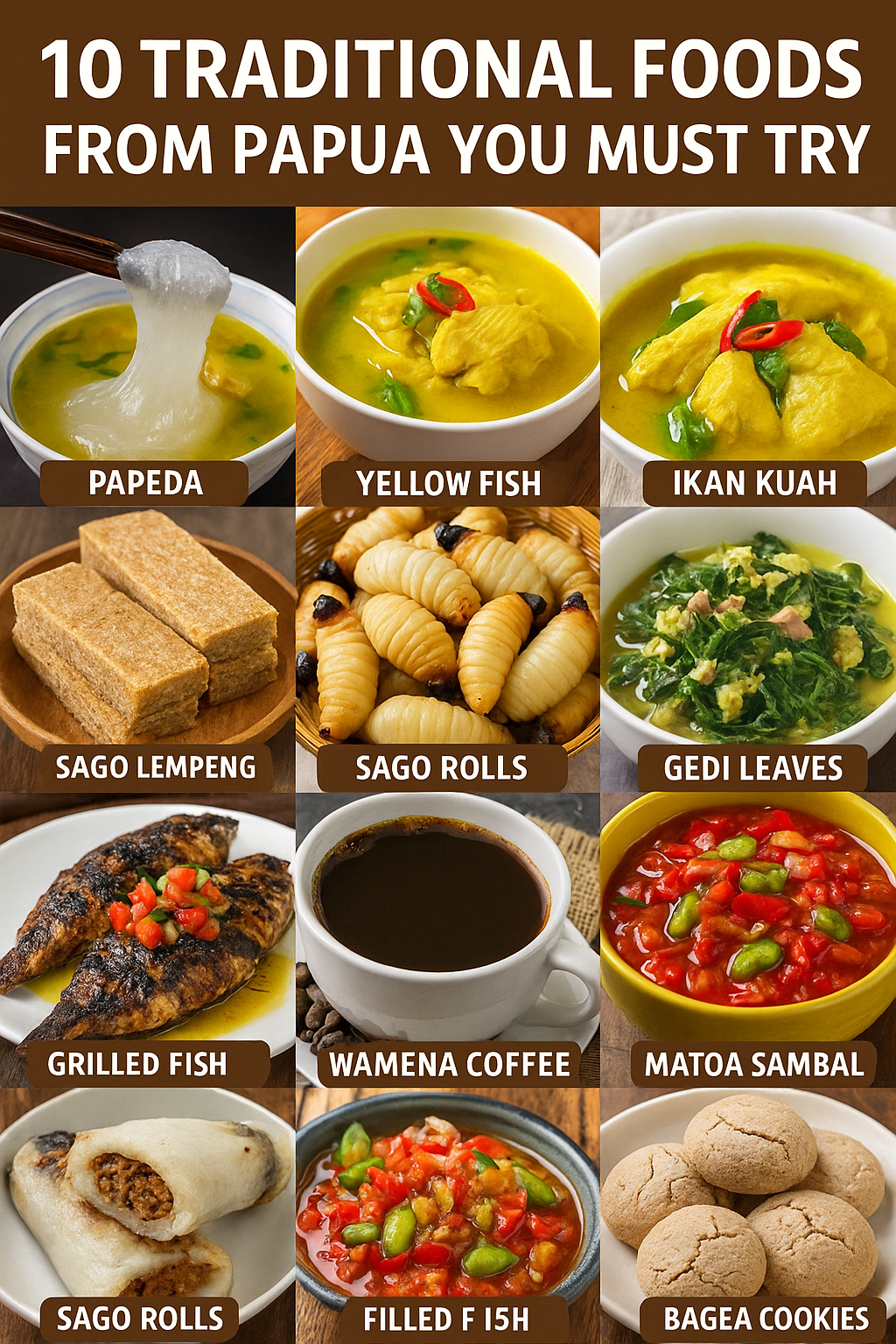10 Traditional Foods from Papua You Must Try
Updated: July 2025
Introduction
Papua, Indonesia’s easternmost province, is a treasure trove of culture, nature, and culinary richness. The region’s traditional foods reflect a deep connection with nature and local customs. From sago-based staples to unique protein sources like sago worms, Papua offers a distinctive culinary experience unlike anywhere else in Indonesia. This article explores 10 of the most iconic and traditional foods from Papua that every traveler and foodie must try.
1. Papeda – Papua’s Staple Dish
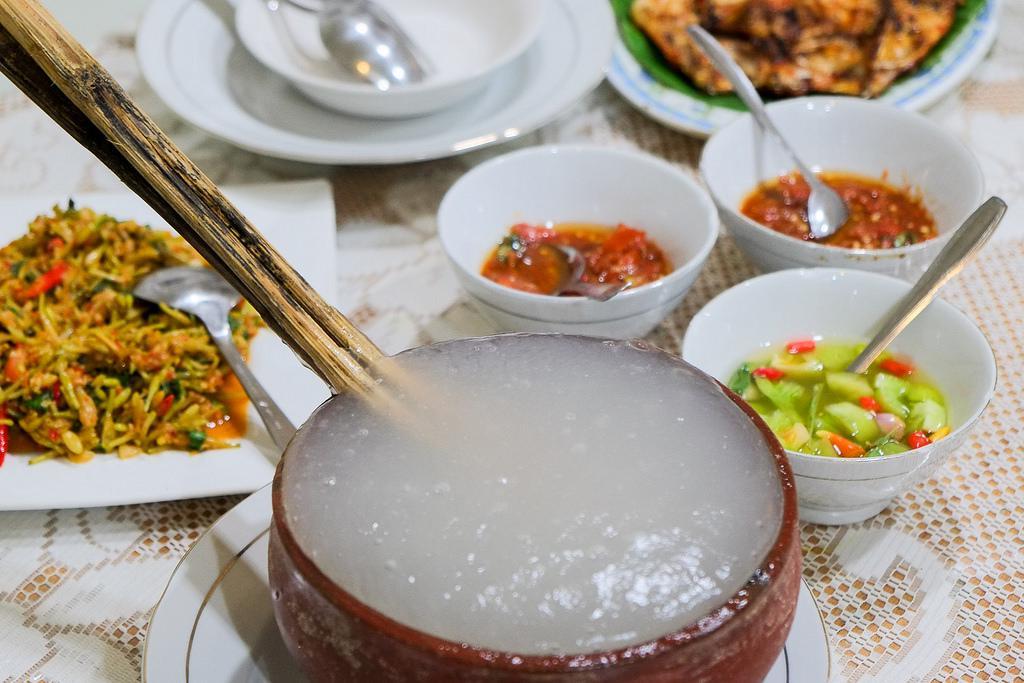
Papeda is a sticky, translucent porridge made from sago flour, widely consumed in Papua and Maluku. It has a bland taste but becomes flavorful when eaten with savory dishes like yellow fish soup. The unique texture—similar to glue or jelly—makes Papeda a must-try experience. Traditionally, it is served hot and eaten with chopsticks or by spinning it into a spoon.
2. Yellow Fish Soup (Ikan Kuah Kuning)

This soup features fresh sea fish such as mackerel or snapper, cooked in a rich broth of turmeric, lemongrass, and local spices. Its vibrant yellow color comes from the turmeric, and the flavor is aromatic, tangy, and slightly spicy. It’s often served alongside Papeda or rice. This dish is not only delicious but also packed with health benefits thanks to the natural herbs and spices used.
3. Sago Worms (Ulat Sagu)

Sago worms are considered a delicacy and a high-protein food source in Papua. Harvested from rotting sago palms, these fat, white larvae are usually eaten raw or grilled. Though unusual to outsiders, locals describe the taste as creamy and nutty. Adventurous eaters traveling to Papua often seek out this delicacy for its bold flavor and cultural value.
Read More : 14 Best Tourist Attractions in Papua, Indonesia
4. Sago Lempeng (Sago Cakes)
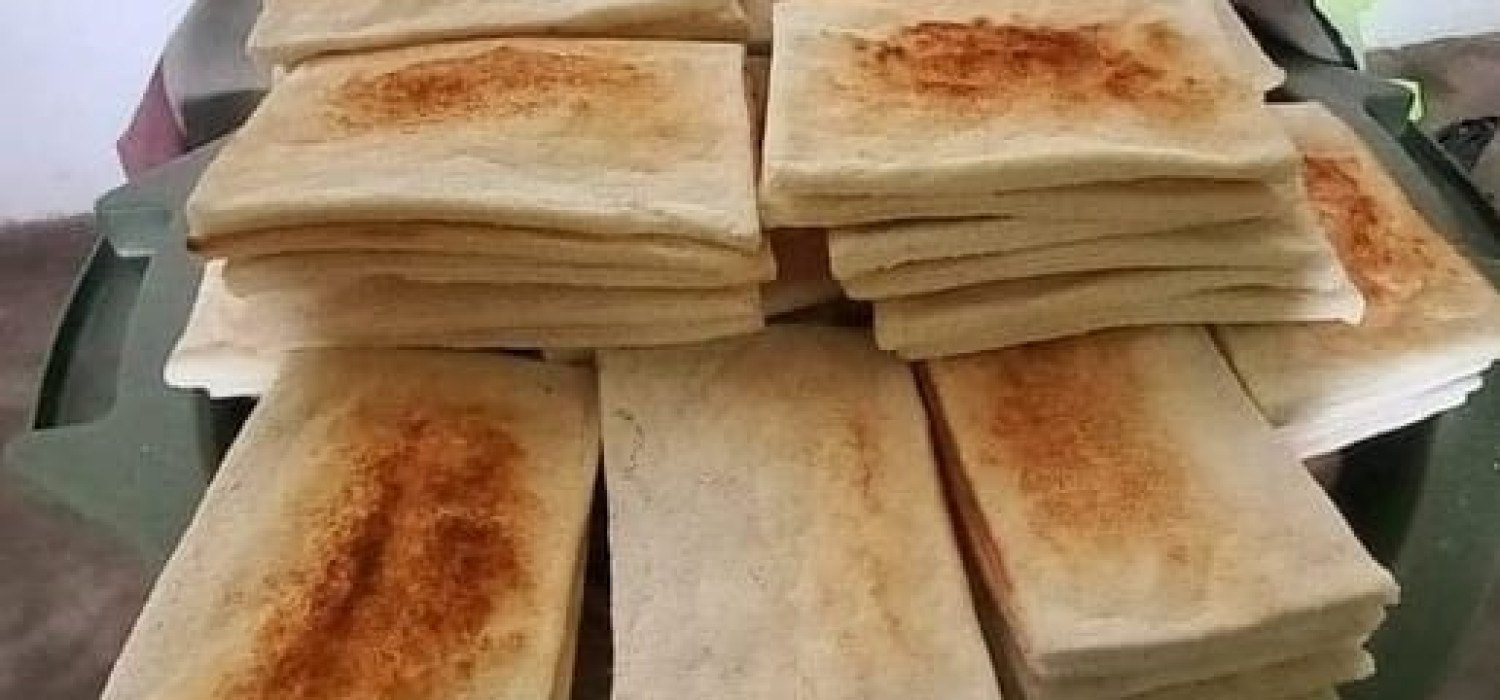
Sago lempeng are dense, rectangular cakes made from sago flour, traditionally baked over firewood. These cakes are firm and chewy, best enjoyed with hot beverages such as coffee or tea. Though simple, sago lempeng holds cultural significance in Papuan communities and is often used in ceremonies or as travel food due to its long shelf life.
5. Grilled Fish with Colo-Colo Sambal

Freshly caught fish from Papua’s coastlines is grilled and paired with colo-colo sambal—a vibrant condiment made from chopped shallots, chili, tomatoes, and lime juice. The sauce adds a zesty kick that enhances the fish’s natural flavor. This dish is a favorite among visitors due to its simplicity, freshness, and bold taste.
6. Gedi Leaves Vegetable Dish

Gedi is a leafy green similar to spinach, widely used in Papua, especially in Biak. When cooked, the leaves release a thick, slimy texture akin to okra. They are typically boiled and mixed with smoked tuna or cooked in coconut milk. Gedi leaves are not only delicious but also nutritious and essential in Papuan households.
7. Sago Rolls Filled with Fish
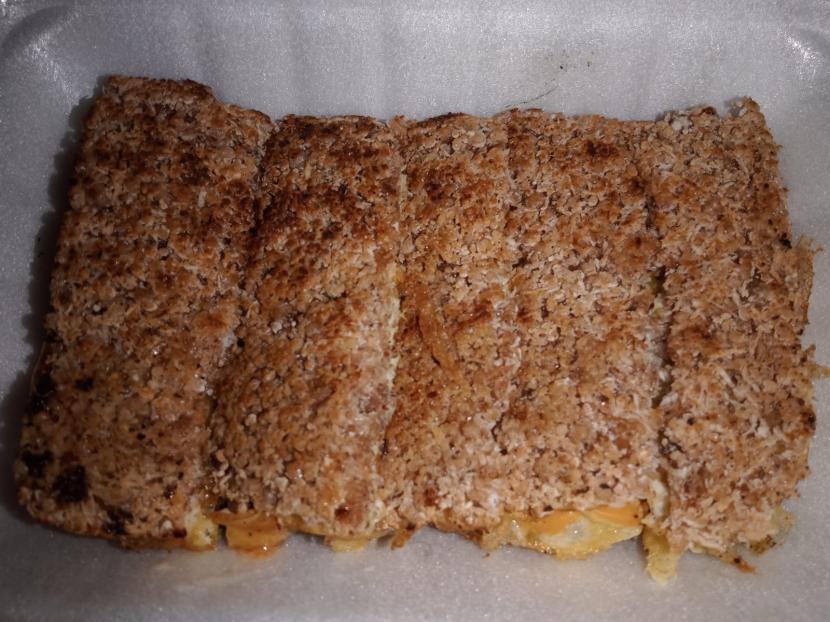
This unique street food consists of sago dough filled with seasoned fish meat (often cakalang or tuna) and then grilled or baked. The outer sago crust becomes slightly crispy, while the inside remains moist and flavorful. These rolls are easy to carry and often eaten during long journeys through remote regions of Papua.
8. Wamena Coffee
Grown in the highlands of Wamena, this organic Arabica coffee is one of Indonesia’s hidden gems. Wamena coffee is known for its mild acidity, smooth body, and floral aroma. It’s harvested manually by indigenous farmers and processed without chemicals, making it a sustainable and premium product. A must-try for coffee connoisseurs!
9. Matoa Fruit Sambal
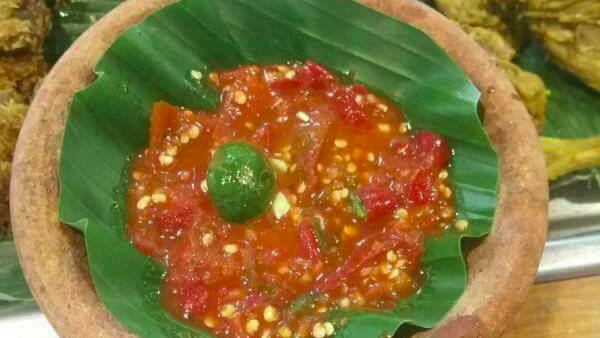
In this innovative twist on traditional chili sauce, matoa—a tropical fruit native to Papua—is blended with chilies to create a sambal that is spicy, sweet, and tangy. This dish exemplifies the creative use of local ingredients in Papuan cuisine. It’s often served with fried or grilled fish and is becoming increasingly popular in modern Papuan restaurants.
10. Bagea Cookies
Bagea is a traditional sago cookie flavored with spices such as cinnamon and nutmeg. Its texture is hard but melts in your mouth when dipped in tea or coffee. While similar cookies are found in Maluku, the Papuan version has its own local twist and is often served during traditional ceremonies or gifted as souvenirs.
Conclusion
From sago-based staples like Papeda and Bagea to exotic treats like sago worms and Matoa sambal, Papua’s culinary heritage is as diverse as its landscapes and cultures. Each dish tells a story of local wisdom, natural abundance, and cultural resilience. Whether you’re a culinary traveler or simply curious about Indonesia’s regional cuisines, these ten traditional foods from Papua offer a memorable and meaningful gastronomic adventure.
Explore Papua not just through its mountains and beaches, but also through its unique flavors that capture the soul of its people. Happy tasting!
Published By goodmorningpapua




